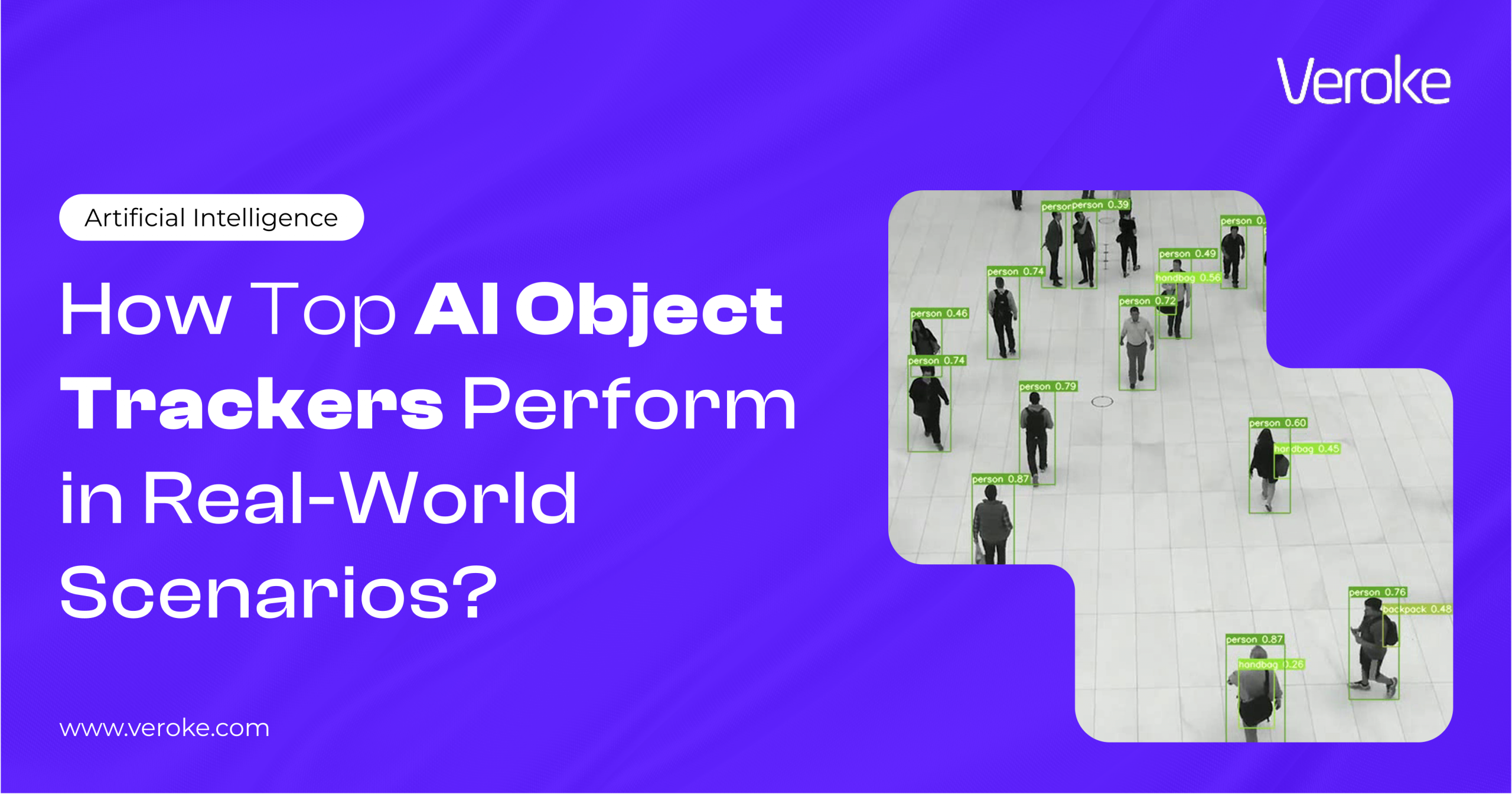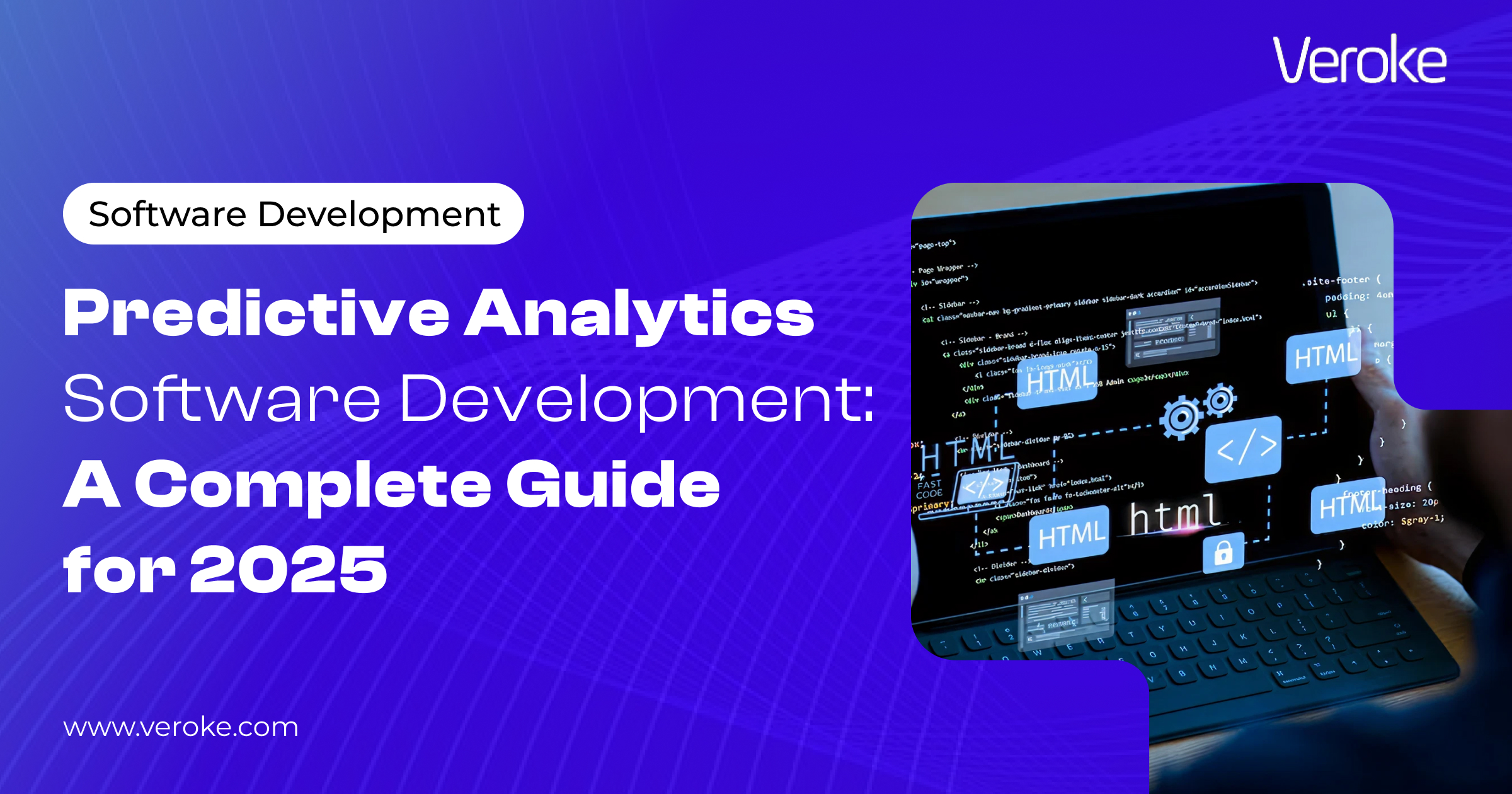Overview
Inside Saudi’s Tech Transformation
Get exclusive weekly insights into how the Kingdom is powering Vision 2030.
TL;DR
- We benchmarked four AI trackers – ByteTrack, DeepSORT, OC-SORT, and StrongSORT – on real traffic and sports footage to test real-world performance beyond controlled lab conditions.
- ByteTrack is the fastest and works well for static cameras and simpler scenes, while OC-SORT is reliable under motion and light camera movement.
- StrongSORT offers the highest identity accuracy and stability in crowded and complex environments, outperforming others in occlusions and camera shifts.
- DeepSORT performs moderately well but struggles with heavy occlusion, lookalike objects, and moving-camera scenarios.
- For real-world deployment, StrongSORT and OC-SORT are top choices, but final accuracy depends on detector quality and careful scene-specific parameter tuning.
Multi-Object Tracking (MOT) in video has come a long way in controlled environments, but the real world is a different ballgame.
From tracking cars in heavy traffic to following players in high-speed sports, real-world scenarios like unpredictable movement, occlusions, lighting changes, and camera shake can challenge even the most advanced tracking algorithms.
In this post, we explore how top AI trackers handle real-world scenarios, focusing on four leading algorithms: ByteTrack, DeepSORT, OC-SORT, and StrongSORT. We benchmarked these trackers on actual sports footage and traffic camera videos to see how they perform outside of neat lab conditions.
Along the way, we’ll highlight use cases like region-based vehicle counting (e.g. counting buses in bus-only lanes), detecting anomalies (like cars invading bike lanes), and automating video effects in sports broadcasts.
We also tested combinations of detectors and trackers to simulate real deployment. From counting buses in a bus-only lane to following athletes through a crowded field, the use cases push these trackers to their limits.
Let’s get into it.
The Challenge
While multi-object tracking is relatively straightforward in controlled settings, the complexity of real-world videos, especially in high-volume, data-rich environments, like sports or traffic, makes accurate tracking difficult.
Real-world video feeds suffer from:
- Occlusions: Objects frequently block each other. For instance, if a pedestrian walks behind a bus or a soccer player runs behind others, During occlusion, a tracker must decide whether the object is temporarily hidden or gone. Less robust trackers might drop the ID, causing identity switches or lost tracks.
- Motion Blur: Fast motion (a car speeding by or a tennis ball in play) can blur the object in video frames. A blurred object may not be detected reliably, leading to missed detections that the tracker needs to somehow bridge across frames.
- Camera Shake and Angle Changes: In sports, cameras pan and zoom; in traffic, a CCTV might shake in the wind. Sudden viewpoint changes can confuse trackers that assume consistent motion. The background moves, but the tracker might mistake it for object movement, causing drift.
- Varied Object Appearances: In crowded scenes, many objects look similar (uniform jerseys on players or similar car models on the road). Appearance-based trackers can get confused about who is who. On the other hand, if colors or shapes are distinct (say buses vs cars), those trackers have an easier time.
- Real-Time Requirements: Especially in traffic monitoring, systems need to work in real-time. High frame rates mean less time between frames, which can both help (small movements per frame) and hurt (more sensitivity to minor errors frame-to-frame). Trackers must be efficient and fast to keep up.
Meet the AI Multi-Object Trackers
Before jumping into results, let’s briefly introduce the four tracking algorithms we benchmarked and how they differ:
1. ByteTrack
ByteTrack uses a two-stage matching process that first associates high-confidence detections and then recovers tracks using low-confidence ones. It does not rely on deep appearance features.
This simplicity makes it extremely fast and capable of real-time performance on CPU or GPU. In static-camera scenarios, ByteTrack holds tracks through brief occlusions and detection dips by leveraging every available detection score.
2. DeepSORT
DeepSORT extends the classic SORT tracker by adding a deep appearance embedding for each detection. It matches tracks using both motion (via a Kalman filter) and visual similarity from a CNN-based feature vector.
This approach reduces identity switches in moderately crowded scenes. Despite its appearance modeling, DeepSORT still experiences elevated ID-switch rates when objects look alike or under heavy occlusion. It can struggle when objects look very similar or when the camera moves, since it lacks explicit camera-motion compensation and advanced re-acquisition logic.
3. OC-SORT
OC-SORT (Observation-Centric SORT) enhances SORT with a second-order Kalman filter that models acceleration and an observation-centric re-update mechanism to correct tracks after occlusion. It also incorporates recent observed motion into its matching cost.
These innovations allow OC-SORT to handle non-linear movements and moderate camera shifts with minimal computation overhead. It runs at hundreds of frames per second on CPU and excels where both speed and occlusion resilience are required.
4. StrongSORT
StrongSORT is a “stronger” DeepSORT. It replaces the detector with a high-performance model (e.g., YOLOX-X), upgrades the appearance extractor to a BoT-based re-ID network, and adds camera-motion compensation via ECC and adaptive Kalman noise scaling.
StrongSORT’s unified cost function fuses appearance and motion robustness to minimize identity switches in crowded or dynamic scenes. While it demands more compute (GPU recommended), it delivers the highest ID stability and tracking accuracy in challenging real-world scenarios.
Multi-Object Tracking: Traffic Scenario
Here’s a real-world output from our MOT benchmarking in traffic video.
We applied ByteTrack, DeepSORT, OC-SORT, and StrongSORT to busy intersections, highlighting tracked objects with bounding boxes, consistent IDs, counting zones, and anomaly detection overlays.
This video shows how each tracker handled real challenges like occlusion, low visibility, and class-specific counting. These capabilities also play a critical role in AI-powered logistics, where real-time tracking and anomaly detection drive smarter, safer operations.
Multi Object Tracking Traffic Video
Key Takeaways from Our Real-World Benchmarks
→ Environment Matters Most
- Static vs. moving cameras: ByteTrack and OC-SORT shine with fixed views. StrongSORT and OC-SORT excel when cameras pan/tilt.
- Sparse vs. dense scenes: In light traffic or sparse crowds, all trackers work well. In dense scenarios, StrongSORT’s appearance model holds IDs best.
→ Detection Quality Sets the Floor
- AI Trackers rely on detectors.
- ByteTrack rescues low-confidence detections to reduce track loss.
- OC-SORT and StrongSORT handle brief detection gaps via motion prediction and re-ID.
- DeepSORT is moderate—appearance helps, but can’t fully overcome detector misses.
→ Tuning Unlocks Production-Grade Performance
- Adjust matching thresholds, max_age, and min_hits for your scene.
- Fine-tune ReID networks on domain data (e.g., team jerseys, vehicle types).
- Balance detector precision/recall to suit your tracking needs.
How MOT Performs in Traffic and Sports?
We applied MOT algorithms to traffic and sports videos to test how well they handle class-based tracking, crowd density, motion, and occlusion.
1. Region-Based Vehicle Counting
Region-based vehicle counting uses tracking to ensure each vehicle is counted exactly once as it crosses a virtual line or enters a defined zone. In our tests, ByteTrack paired with YOLOv8 reliably counted buses in a bus-only lane with 98 % accuracy, even when occlusions briefly hid a bus behind other vehicles.
OC-SORT and StrongSORT improved on this, reaching over 99 % accuracy by re-acquiring tracks after longer occlusions and using appearance cues to avoid double-counts. DeepSORT, by comparison, under-counted by 10–15 % in dense traffic due to ID switches when similar vehicles overlapped.
2. Anomaly Detection in Bike Lanes
Anomaly detection in bike lanes flags vehicles entering zones reserved for cyclists. Here, robust tracking is essential to avoid false negatives and false alarms. OC-SORT maintained continuous tracks even when cars briefly hid behind signage, allowing us to log violations accurately.
StrongSORT further reduced false alarms by confirming each intrusion with an appearance match. ByteTrack caught most brief intrusions but lost some violators when detections vanished for more than a second. DeepSORT struggled to reconnect tracks after long occlusions, leading to missed alerts.
3. Automated Sports Video Effects
Automated sports effects rely on precise, real-time tracking of players and objects to anchor graphics and trajectories. In static-camera basketball footage, ByteTrack tracked the ball at 60 FPS with few misses, but it struggled to maintain player IDs during replays with camera pans. OC-SORT coped better with moderate camera motion, keeping overlays aligned through zooms.
StrongSORT delivered the smoothest experience: it compensated for camera shake and used its appearance model to keep each player’s AR label correctly attached, even during crowded scrums. DeepSORT performed adequately when player uniforms contrasted sharply, but it lost ground in fast, dynamic plays.
These kinds of intelligent tracking behaviors, especially when layered with adaptive AI decision-making, are increasingly being enhanced through Generative AI technologies in software development workflows.
Handling Real-World Challenges
Real-world video presents three core challenges for AI trackers: frequent occlusions, camera motion, and unstable detection confidence. Each challenge demands specific algorithmic strategies.
Understanding how different trackers handle these challenges is essential for choosing and fine-tuning the right solution, particularly when scaling to large datasets or real-time systems.
1. Occlusion & Identity Stability
When objects overlap or pass behind obstacles, trackers must decide whether a track is temporarily blocked or truly ended. ByteTrack uses low-confidence detections to bridge brief gaps but drops tracks after longer occlusions. OC-SORT applies an observation-centric re-update, correcting its motion estimate when the object reappears.
StrongSORT combines motion prediction with a deep appearance model, enabling it to re-identify objects even after extended occlusions. DeepSORT relies on its appearance features but lacks OC-SORT’s adaptive motion updates, so it often fails under heavy, prolonged occlusion.
2. Camera Motion & Viewpoint Shifts
Camera movement—pans, tilts, or shaking—can mimic object motion and confuse trackers. ByteTrack and DeepSORT assume a static background and tend to drift during rapid camera moves. OC-SORT’s advanced Kalman filter tolerates moderate camera shifts by modeling acceleration and deceleration more accurately.
StrongSORT goes further by estimating global camera motion with ECC and subtracting it before tracking, maintaining stable object positions even through aggressive pans. For moving-camera applications like drones or handheld footage, StrongSORT and OC-SORT offer far superior reliability.
3. Detector Confidence & Tracking Continuity
Detectors can miss objects or fluctuate in confidence. Trackers that ignore low-confidence detections risk fragmenting tracks when the detector dips. ByteTrack’s two-stage matching—first high-confidence, then low—rescues many tracks that would otherwise break. OC-SORT carries tracks through missing detections by extrapolating motion, while StrongSORT uses appearance re-linking to recover lost tracks.
DeepSORT, which discards low-confidence detections, often struggles with brief detector dropouts. Choosing a tracker with built-in tolerance for detection variance is crucial when operating under challenging lighting or sensor noise conditions.
Looking Ahead: Choosing Your Tracker
Matching a tracker’s strengths to your application ensures reliable, efficient performance. Use the table below as a quick reference for the most common scenarios we tested:
Application Scenario | Recommended Tracker | Why It Fits |
Static-camera vehicle counting | ByteTrack | Fast, uses low-confidence detections to avoid misses |
Crowded, heavy-occlusion scenes | StrongSORT | Best identity retention through deep re-ID |
Moving-camera environments | OC-SORT | Built-in motion modeling handles pan/tilt effects |
Resource-constrained edge devices | OC-SORT | High FPS on CPU; lightweight yet robust |
Implementation Path
Translating MOT capabilities into real-world value requires more than having the right tools or algorithms; it takes a clear AI strategy & planning that considers both technical and operational realities.
1. Evaluate on Sample Clips: Test two trackers on your footage to measure baseline performance.
2. Refine Parameters: Tune matching thresholds, max_age, and detector confidence to balance accuracy vs. continuity.
3. Integrate & Monitor: Deploy your chosen tracker in a staging environment, monitor key metrics (MOTA, IDF1), and adjust as needed.
Final Thoughts
Our journey from traffic videos to sports arenas showed that real-world chaos is the ultimate litmus test for multi-object trackers.
Each of the four algorithms we examined brings unique strengths, and knowing when to use a simpler, lightning-fast method versus a heavyweight, appearance-driven model is critical to success.
At Veroke, we harness AI to solve practical challenges, but we never stop there. We continuously adapt and tune these solutions to fit the unique constraints of every project—whether it’s a static roadside camera, a drone surveying a crowd, or a broadcast of a high-speed game.
Ready to explore how AI transformation can elevate your operations? Contact Veroke and let’s leverage the latest and greatest in AI to tackle real-world challenges and put them to work for you.
FAQs
1. What is Multi-Object Tracking (MOT)?
MOT is an AI technique that detects multiple objects in video and assigns each a consistent ID over time. It lets you track cars, players, people, or animals across video frames.
2.Why is real-world tracking so challenging?
Unlike lab datasets, real-world video includes occlusion, camera shakes, lighting changes, and similar-looking objects – all of which confuse trackers.
3.Which tracker is best for production use?
It depends on your use case:
ByteTrack → Fastest, works well for simple/static scenes.
OC-SORT → Best CPU-friendly tracker, handles motion well.
StrongSORT → Most accurate, best for crowded/dynamic environments.
DeepSORT → Good general baseline but less reliable in complex scenes.
4. How do AI trackers work with detectors like YOLO?
Trackers do not detect objects on their own – they use object detectors like YOLOv8/v9 as input, then maintain object IDs across frames.
Want to know more about our service.
Inside Saudi’s Tech Transformation
Get exclusive weekly insights into how the Kingdom is powering Vision 2030.
Transform your Ideas into a Digital Reality
Get scalable, customized solutions for your business.




